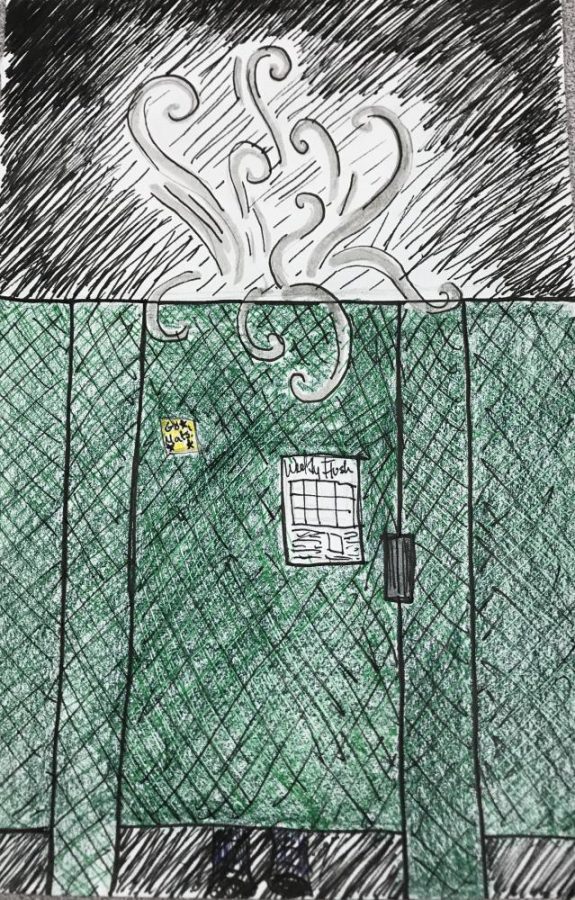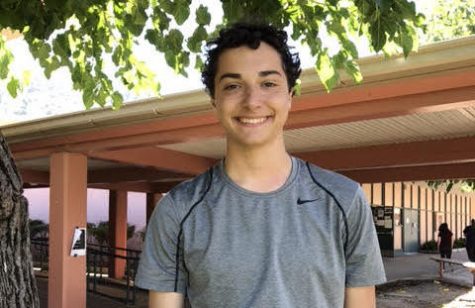Miramonte Needs to Kick its Drug Habit
October 11, 2017
Miramonte has long held a reputation as a school with a drug problem. On sites like GreatSchools and Niche, former students and parents have singled out the drug problem as a large part of the school’s homogenous social structure. On Urban Dictionary, Miramonte High School’s definition includes a warning: “Everyone smokes pot. Get used to it.”
In the California Healthy Kids Survey conducted by the U.S. Department of Education during the 2015-16 school year, 42 percent of Miramonte students admitted to having tried marijuana. While 42 may seem to be a shockingly high percentage, at least one student believes it to be underestimate. “Almost everybody I know has tried at least one drug,” an anonymous senior said. The student believes that 95 percent of the senior class has used illegal substances.
While the exact amount of students abusing illegal substances may be unknown, one thing is clear: the culture of illegal drug use is widespread at the school, as is the acceptance among students.
The drug problem has existed for a long time in Lamorinda. In October 1998, Acalanes High School hosted a community forum to discuss the drug problem in response to a survey of students in Lamorinda and Walnut Creek. Among the 12th graders surveyed, 83 percent had tried at least one drug.
Marijuana is believed to be less harmful than other drugs, but it does not come without its share of consequences. According to a 2012 Duke University study, those who repeatedly use marijuana, if they begin in adolescence, permanently lose an average of eight IQ points by age 38.
One of the main reasons marijuana usage is rationalized is because it is not considered addictive. And while research from the Institute of Medicine has shown that only about nine percent of marijuana users develop an addiction, its impact on younger brains is far more troubling. Addiction rates for teens could be as high as 17 percent, with 30 percent developing a marijuana use disorder, according to drugabuse.gov. And these numbers may only increase. A 2015 study from the Charas Scientific laboratory in Denver concluded that the concentration of THC in marijuana has tripled since the early 1980s. Access to THC at an early age also increases the reward the brain receives for other, harder addictive substances, according to the National Institute on Drug Abuse (NIDA).
To make matters worse, marijuana users are also more susceptible to addiction to other drugs, especially when the surrounding social environment is infested with both talk of and consumption of drugs. Additionally, those who are exposed to marijuana are more likely to be offered harder drugs, according to NIDA.
The reason there are so many misconceptions about drug use among students is simple: no one told them the facts. Students in the classes of 2018 and 2019 received drug education as a part of their P.E. curriculum. The education was abbreviated and only took a couple of days.
Starting this year, sophomores and freshmen will receive more extensive education on drugs in a new mandatory health class. Additionally, freshmen will discuss the subject in an innovative program called freshman seminar. Freshman seminars are small breakout groups that meet during academy to discuss relevant issues pertaining to the transition from middle school to high school. Administration recognizes that there is a dramatic increase in substance abuse junior year, and therefore finds it vital to educate underclassmen.
It’s a sad fact that students pressure each other to try drugs. The vicious cycle creates a toxic social situation in which the drug-doing majority attempts to persuade the abstinent minority—both vocally and more subtly—by implying that in order to have a social life in Orinda, one must do drugs. It is deeply engrained in the social structure, so severely that those who elect to not do drugs feel socially constrained.
The problem is compounded by ignorant students, parents, teachers, and administrators. According to Orinda Police Officer Allison Kotchevar, parents are responsible for the actions of their children. “That’s usually the path we go down—to hold the adults more responsible for what their kids are doing. Either when they’re not around, not paying attention, or turning a blind eye,” Kotchevar said. Many citizens of Orinda are at least partially aware of the situation; it is a popular subject on community websites such as Nextdoor and Lamorinda Families. The aforementioned anonymous senior’s family has some knowledge about his drug use. “My parents are partially aware of my situation,” he said. “They know I smoke marijuana but they have no knowledge of any other drugs I consume.”
In the Miramonte student handbook, the school explicitly prohibits drug use and drug possession on campus, but the rules are difficult to enforce. Students have adapted to methods of partaking in illegal substances that are challenging to detect, such as vaping.
Students frequently vape and smoke marijuana during school, as evidenced by the pungent, burnt smell in and around the restrooms. Students also take dabs (enhanced THC) and consume other drugs in the parking lot before the school day begins. “My friend and I have both taken psychedelic mushrooms before school,” the aforementioned anonymous senior said. Drug possession and use on school property has long been common at Miramonte. Students discuss exchange of drugs during passing periods and lunch. At football games, students all over the stands vape and smoke marijuana under their shirts.
Some of the school’s preventative techniques are more passive than active. In the 2016-17 school year, the campus security guard had a reputation among students for letting them off the hook when they were caught under the influence at school. This year, there is no female security guard who checks on the girls’ bathrooms. The precedent that students can get away with bringing and using drugs at school encourages more students to participate. Because high school is when most users start, it is crucial that the situation is taken under control. The school recognizes it as an issue, and is developing more ways to restrict it.
If the school elected to crack down on drug use on campus in a more aggressive manner, possibly in partnership with the police department, the community’s stance on drugs might adopt a more serious tone. The casual nature in which the drug abuse is currently discussed only encourages more usage. Administration could ask the police to bring in drug-sniffing dogs to search the school and parking lot, which would greatly reduce the problem of illegal substances on campus. According to Officer Kotchevar, the Orinda police does not trigger searches of the campus on their own. “[Searches] would be initiated by the school,” Kotchevar said. “We have never done any random car searches on campus. Again, it’s more up to the school to call us when they feel they need us.”
The school doesn’t involve the police unless there is a repeated offense. “We would prefer to handle [drug offenses] within-house. We prefer to work with our students and their families directly and provide intervention and education,” associate principal Jan Carlson said. Carlson said that administration is more focused on protecting the students and giving them the proper information rather than involving law enforcement. In terms of disciplinary decisions, administration follows the ed code, which is highlighted in the student handbook. There is always a suspension involved.
Perhaps administrators are hesitant to assertively combat the issue because they fear it will damage their relationship with the student body and the Miramonte community as a whole. “As students we’re all in this community together. We want to build a strong healthy community here,” Carlson said. Random drug searches send the message that administration does not trust the student body. But in order to improve the situation in the long run, drug searches may be the best option to reduce the problem on campus.
It’s clear that the standing rules are not effective. The resources are available. The methods of investigation exist. There are possible solutions. But until administration develops a more proactive solution, the cycle will continue and Miramonte will continue to be known as a stoner school.
The school year of the California Healthy Kids Survey data has been changed from 2016-17 to 2015-16 and further specifications were added from the print version.









